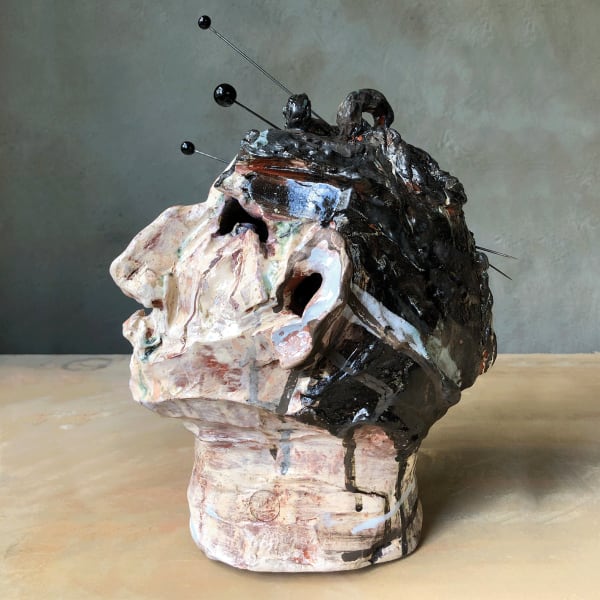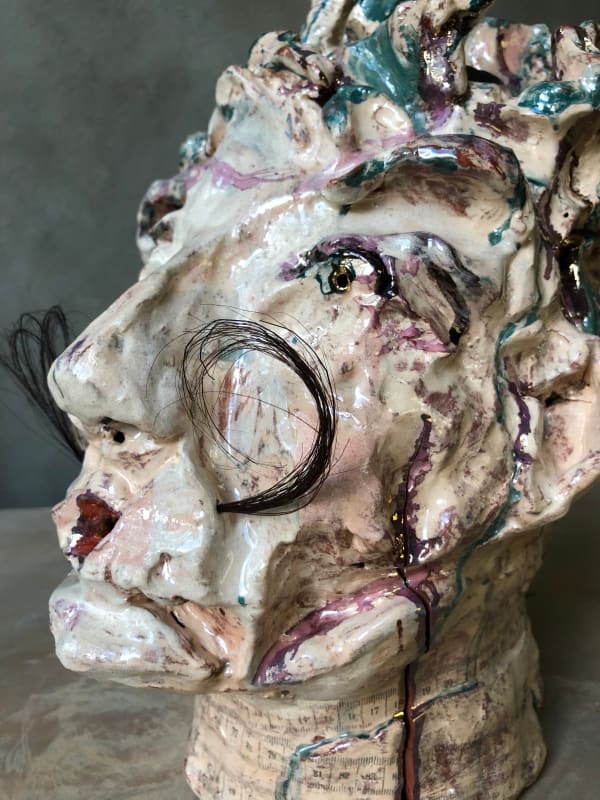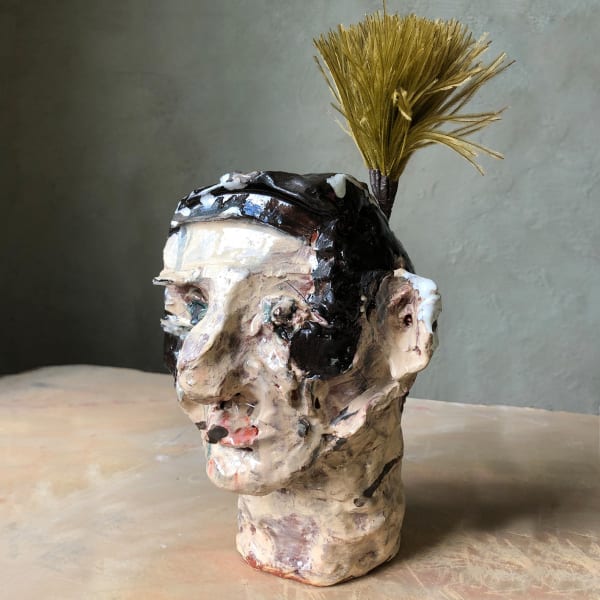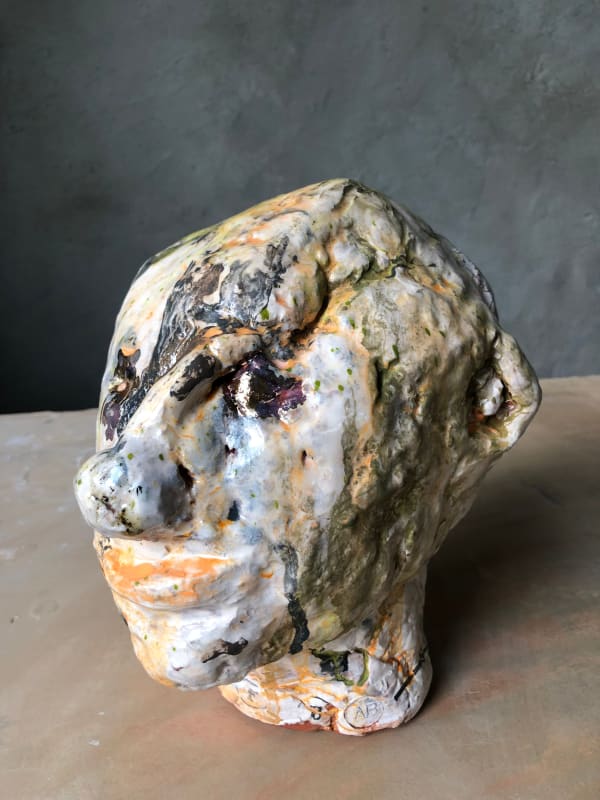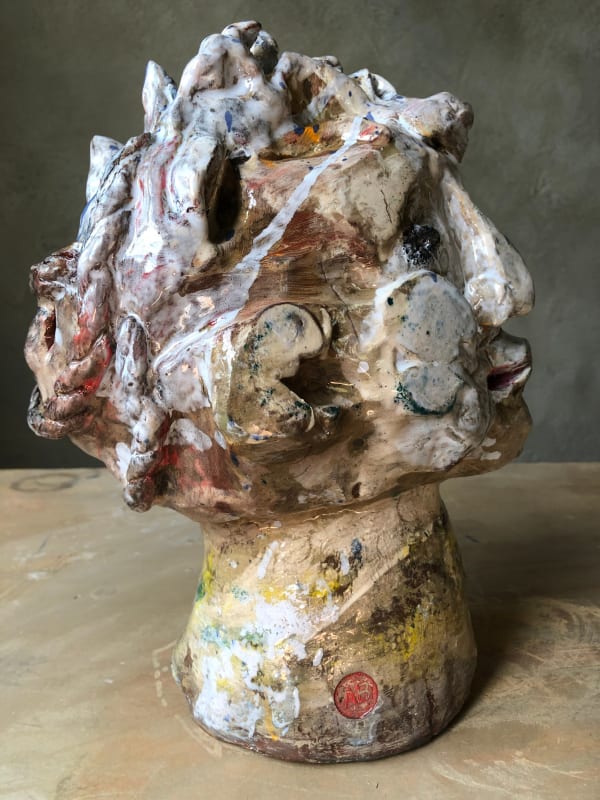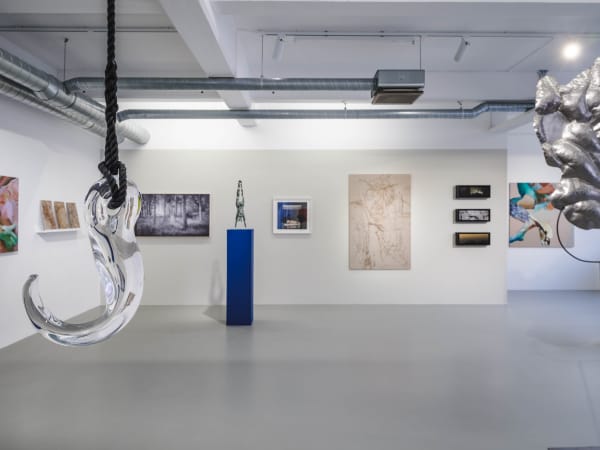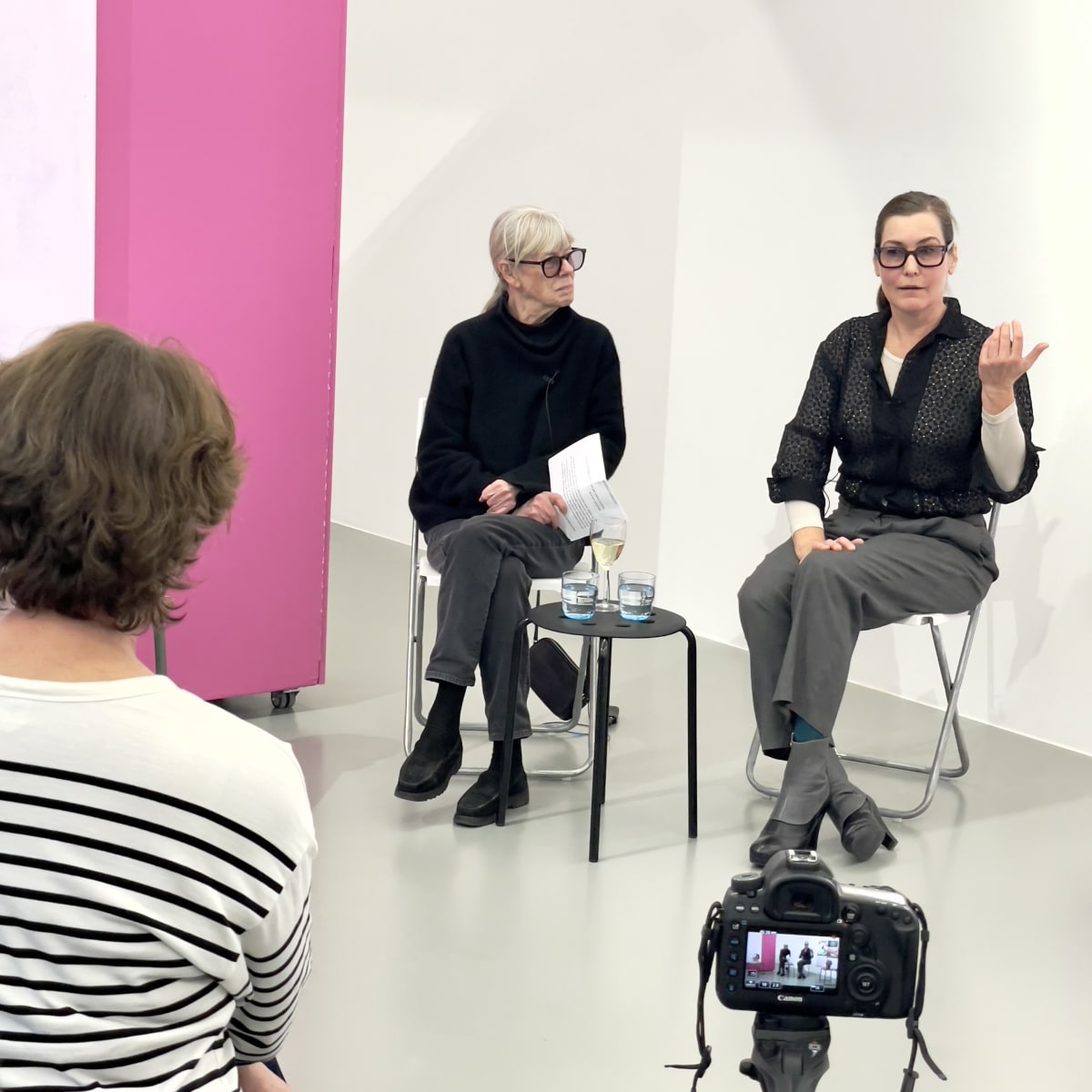Anna Bergman Jurell Swedish, b. 1965
"My process is an interaction between the material and me in constant dialogue. I observe where the clay takes me and attempt to capture something fleeting that catches my eye."
Anna Bergman Jurell's sculptures are created from a single wet lump of clay, which allows the material to be an intricate part in guiding the process. Bergman Jurrell challenges and pushes the limits of the material by exploring how soft the clay can be during the actual working process without collapsing upon itself.
Born 1965 in Gothenburg, Anna Bergman Jurell is a Stockholm-based ceramic artist with a background as a costume designer and scenographer. She has previously collaborated with Ingmar Bergman in the works of Strindberg and Ibsen, which has marked her artistry. Bergman Jurell's interest in the turn of the century 1900 is further developed in her exploration of status symbols in clothing and fashion and is transferred here to ceramics.
Clay in motion
I begin with a wet clump of clay, then push its limits by exploring how soft the clay can be without it collapsing during the working process. I reuse clay that has dried but not been fired. Crushed or in large clumps, it is collected in buckets and covered with water. Within a few days, it becomes a mush that is then spread out on plasterboards to absorb excess moisture. Using this well-established way to conserve and reuse clay makes it possible to completely control how firm or loose the clay will be. I try to find the ultimate consistency where the clay is in a soft, pliable but very unpredictable phase, still moist enough to have a life of its own. The challenge lies in the clay's own will and the force of gravity. If the clay is too loose, the sculpture can collapse upon itself.
The process is an interaction between the material and me in constant dialogue. I observe where the clay takes me and try to capture something fleeting that catches my eye. Can I even work with an even thinner slab of clay? How much volume can I achieve in relation to the thickness of the surface? I work thickly with large pieces and construct the sculptures from multiple parts. The clay shrinks as it dries and therefore moves. To prevent cracking, everything must dry at the same rate, both thick and thin areas. A sculpture may remain wrapped in plastic for several weeks to dry slowly and gradually open up. Ideally, I want the sculpture to solidify while simultaneously starting to collapse and freeze in motion.
The tactile sensation is also essential. The visible end result is created through touch and contact, and the finished sculpture should invite touch. I enjoy feeling the clay between my fingers, and my hands leave distinct marks in the sculptures. Despite a certain voluptuousness in expression, I strive for simplicity, seeking directness and a kind of minimalism in execution. It is about knowing when to stop and finding balance. How little can one do and still be clear and find sharpness? When does the eye perceive it as a face? What distinguishes a female head, and when does it look like a male? These are questions I carry with me throughout the process. Shaping is a harmony between the experience of the hand and the reaction of the material.
When it comes to glazing, my approach is entirely intuitive; no grams are weighed here. I dip, pour, and splash in search of the same flow and feeling in the glaze as in gouache painting, where wet-on-wet blends together. My first encounter with clay was as a "canvas." I saw clay as a support for visual art and experimented with screen printing. The clay was rolled out like a canvas, and when it hardened to a leathery consistency, I could transfer my screen prints onto it. Today, I can combine screen prints on rolled-out sections with hand-sculpted organic forms.
Currently, I am not just working with heads but also with other body parts. Instead of highlighting an individual sculpture and allowing space for its specific story, I want to link multiple objects together into a whole. Hands, together with a head, create a scenographic presentation where the different parts interact with each other, becoming a theatrical installation.
One could say that the circle is complete because I am still "building characters.” I started working three dimensionally by creating theater costumes, transitioned to painting through my costume sketches, and now to sculpture. Similar to painting, I strive for energy and momentum in sculpture, seeking movement or, at the very least, a clear direction. It often requires setting the lines on the first attempt; otherwise, it may be better to start over. Therefore, I avoid dabbing and correcting too much, as it can diminish the power of the work. If the sculpture feels static, I might give it a jolt, creating entirely new conditions. In deconstruction, there is always something new to discover as a starting point. It is a living process, dynamic and playful. I have multiple drafts and ideas, but in the moment, with the clay in front of me, I decide based on how the clay behaves, determining the form it should take. The overall feeling should be simple and self-evident. As my mentor, the artist and scenographer Lennart Mörk, once told me, "Don't forget the bold brushstrokes." His words still accompany me in my creative journey.
-
 Suffragett / Suffraget, 2022View more details
Suffragett / Suffraget, 2022View more details -
 Stärkkrage / Wing Collar , 2022 SoldView more details
Stärkkrage / Wing Collar , 2022 SoldView more details -
 På Näthinnan / On the Retina, 2022View more details
På Näthinnan / On the Retina, 2022View more details -
 Mustasch / Mustache, 2022View more details
Mustasch / Mustache, 2022View more details -
 Mouche / Beauty Spot, 2022View more details
Mouche / Beauty Spot, 2022View more details -
 Monokel / Monocle, 2022View more details
Monokel / Monocle, 2022View more details -
 Manlig Flärd / Male Flair, 2022View more details
Manlig Flärd / Male Flair, 2022View more details -
 Manlig byst / Male Front , 2022View more details
Manlig byst / Male Front , 2022View more details -
 Karriärskvinna / Career Woman, 2022View more details
Karriärskvinna / Career Woman, 2022View more details -
 I Blickfånget / Eyecatcher, 2022View more details
I Blickfånget / Eyecatcher, 2022View more details -
 Hen / Them, 2022View more details
Hen / Them, 2022View more details -
 Chinjong / Chignon, 2022View more details
Chinjong / Chignon, 2022View more details -
 Begynnelsen / The Beginning, 2022View more details
Begynnelsen / The Beginning, 2022View more details
-

Springbrunn – A group show with our gallery artists
11 Jan - 17 Feb 2024As spring arrives, a palpable sense of hope fills the air, mirroring the transformative thaw of ice that births life-giving water. The way this water shapes itself and flows forward...Read more -

Anna Bergman Jurell | How it used to be
29 Sep - 11 Nov 2022Bergman Jurell’s first solo exhibition with the gallery is a collection of ceramic sculptures that raise several questions: What is feminine vs. masculine? Femininity yesterday and today? What accessories and attributes are used to define femininity and masculinity?Read more
Anna’s work continues what she has long been doing as a costume designer for director Ingmar Berman and others. Her special interest in turn of the 19th Century culture spurred her exploration of status symbols in clothing and fashion. What is typically male? What is typically female? What is he, she, it and them?
Anna Bergman Jurell is a Swedish artist based in Stockholm.

